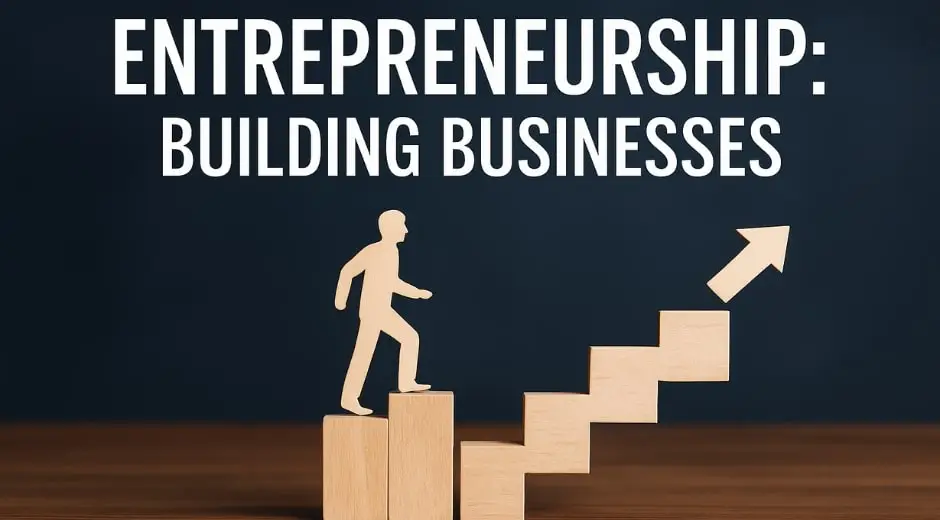From Idea to Income: The Rise of the Micro-Entrepreneur in the Digital Age
In the fast-paced, hyper-connected digital world of 2025, the term micro-entrepreneur has taken on new meaning. No longer confined to traditional brick-and-mortar businesses, today's micro-entrepreneurs are leveraging online tools, platforms, and communities to turn simple ideas into thriving income streams. From TikTok creators to Etsy shop owners, this shift is reshaping economies, disrupting industries, and empowering individuals worldwide.
What Is a Micro-Entrepreneur?
A micro-entrepreneur is someone who operates a small-scale business with minimal startup capital and a high degree of independence. These individuals often work alone or with a very small team. They rely heavily on digital tools, automation, and flexible business models to scale their operations. The internet has dramatically lowered the barrier to entry, allowing almost anyone to launch a product or service from home.
According to Forbes, the rise of micro-entrepreneurship is one of the most significant economic trends of the past decade. In the U.S. alone, over 44 million people now identify as self-employed or independent workers.
Why Micro-Entrepreneurship Is Booming
Several factors have contributed to the explosion of micro-entrepreneurs in the digital age:
- Low Startup Costs: With just a smartphone, internet connection, and a good idea, anyone can launch a business.
- Global Reach: Social media and e-commerce platforms give creators access to global markets without traditional infrastructure.
- Flexibility: Micro-entrepreneurs can often work on their own schedules, making it ideal for students, parents, or full-time workers seeking side income.
- Digital Tools: Automation, AI, and online marketplaces make it easier than ever to manage logistics, marketing, and finances.
Popular Micro-Entrepreneur Models in 2025
Some of the most successful business models adopted by micro-entrepreneurs in 2025 include:
- Print-on-Demand Stores: Using services like Printful or Redbubble, creators sell custom designs on t-shirts, mugs, and phone cases without holding inventory.
- Content Creation: YouTubers, podcasters, and influencers monetize their audiences through ads, sponsorships, and digital products.
- Freelance Services: Platforms like Upwork and Fiverr enable freelancers to offer writing, design, coding, and consulting services.
- Online Courses and eBooks: Experts in niche areas create passive income by packaging their knowledge into educational content.
Visit our guide to essential digital tools for creators for practical help in setting up your own micro-business.
How to Get Started as a Micro-Entrepreneur
Becoming a successful micro-entrepreneur isn’t about overnight success — it’s about consistent action. Here's a simplified roadmap:
- Start with a Clear Idea: Solve a problem, entertain an audience, or fill a niche market.
- Validate Demand: Use surveys, keyword tools, or trend platforms like Google Trends to ensure there’s interest in your idea.
- Choose a Platform: Decide whether you’ll sell via Etsy, Amazon, Gumroad, your own website, or social media.
- Create and Launch: Focus on a minimum viable product (MVP) and get it out quickly. Refine based on feedback.
- Market Yourself: Use content marketing, SEO, and social media to attract and retain your audience.
The Challenges of Micro-Entrepreneurship
While empowering, being a micro-entrepreneur isn't always easy. Common challenges include:
- Inconsistent Income: Without a fixed salary, income may fluctuate, making budgeting more difficult.
- Burnout: Managing every aspect of a business can be exhausting without clear boundaries or systems.
- Visibility: The digital space is crowded. Getting seen requires persistence and smart strategy.
However, with the right mindset and strategy, these challenges are entirely manageable. Micro-entrepreneurs can gradually scale operations, outsource tasks, and build stable income streams over time.
Micro-Entrepreneur Success Stories
Some of today’s most inspiring success stories started as micro-ventures. Take the example of Business Insider profiles like that of creators who turned $100 Etsy shops into six-figure brands — or Twitch streamers who monetized their gaming passion into full-time careers.
These stories highlight the power of persistence, authenticity, and community-building. As more people prioritize autonomy and purpose, the micro-entrepreneur path is becoming a popular — and viable — alternative to traditional employment.
The Future of Micro-Entrepreneurship
As AI tools, automation, and creator platforms continue to evolve, the future looks even brighter for the micro-entrepreneur. New technologies will further reduce startup friction and expand global access to entrepreneurship.
Governments and institutions are beginning to recognize the economic value of micro-enterprises. Tax reforms, digital education, and micro-loans are all contributing to a more supportive environment for solopreneurs and side hustlers.
Final Thoughts: It's Never Been Easier to Start
From side hustle to scalable business, the rise of the micro-entrepreneur is more than a trend — it’s a movement. With the right mix of curiosity, grit, and digital tools, turning an idea into income is no longer reserved for the few.
Now is the time to explore, experiment, and embrace the micro-business revolution. Whether you're aiming for supplemental income or full independence, there's never been a better time to take the leap.
Simple Entrepreneurship

Strategic Partnerships: The Hidden Power Behind Business Growth and Lasting Networks
Strategic Partnerships explores how collaboration, trust, and shared vision create strong business growth and redefine networking in the modern economy.

Brand Authenticity: The New Currency of Modern Marketing
Brand Authenticity explores how genuine storytelling, trust, and transparency build lasting relationships and drive success in modern marketing.

Sustainable Investing: Building Wealth with Purpose and Long-Term Impact
Sustainable Investing explores how conscious investors combine profitability with social and environmental responsibility to shape a better financial future.

Adaptive Leadership: Guiding Entrepreneurs Through Constant Change
Adaptive Leadership explores how entrepreneurs can navigate uncertainty, motivate teams, and turn change into strategic opportunity in a fast-evolving world.













